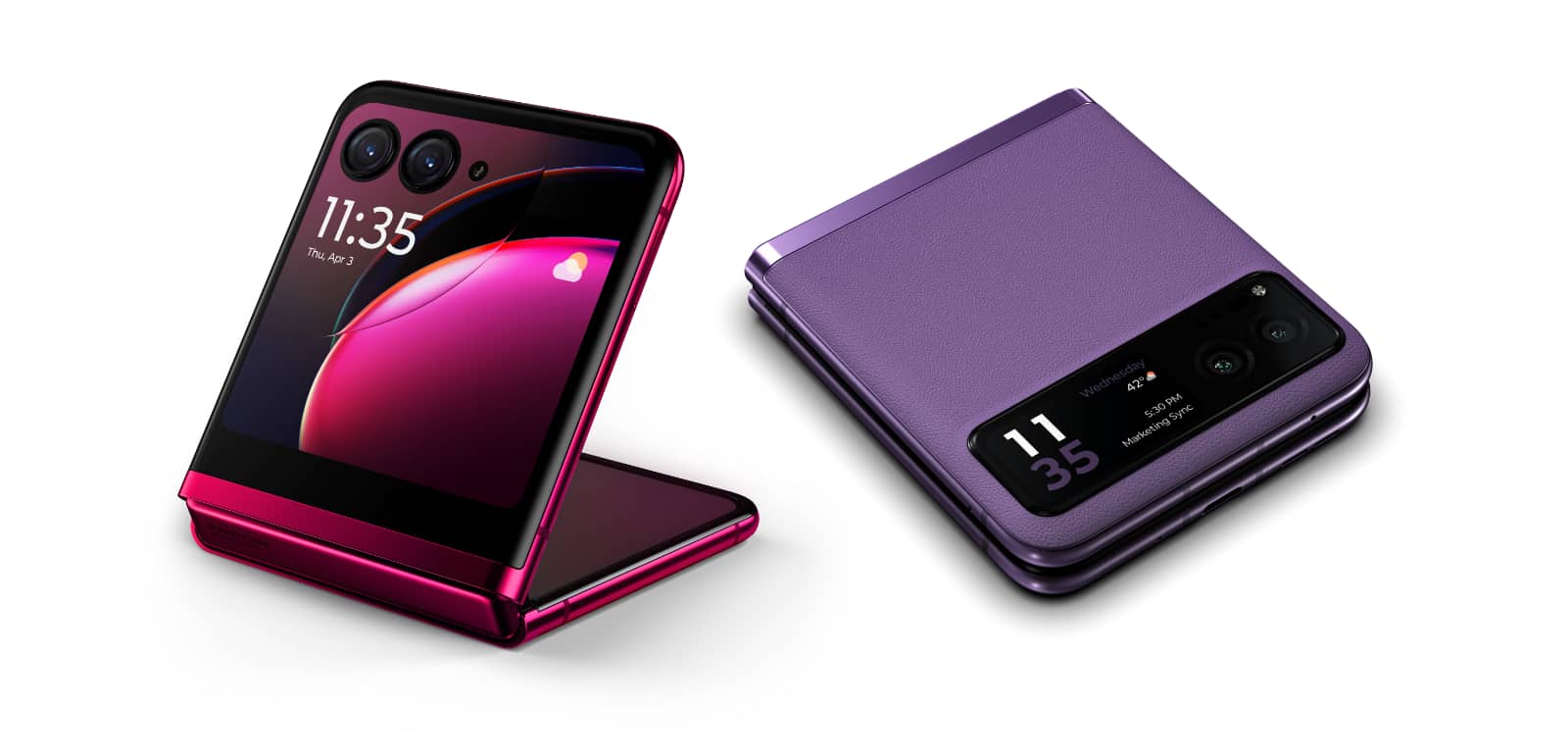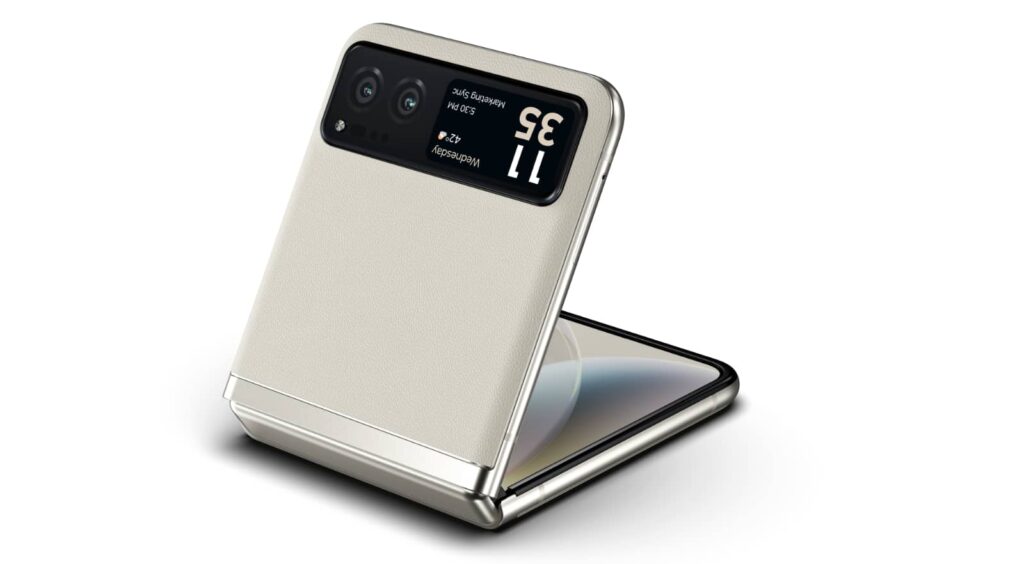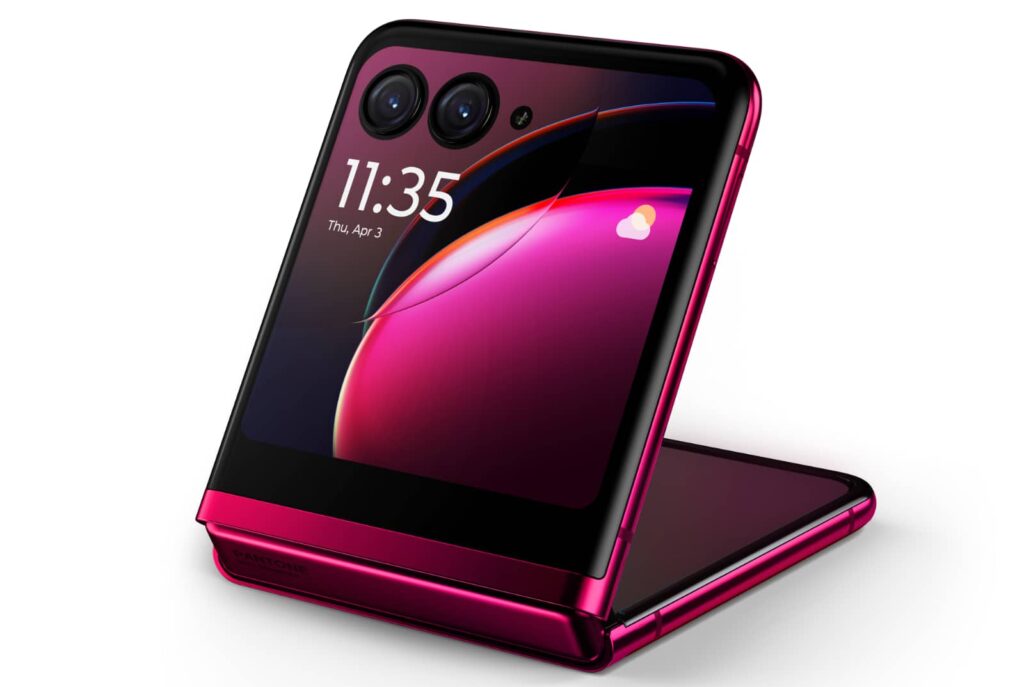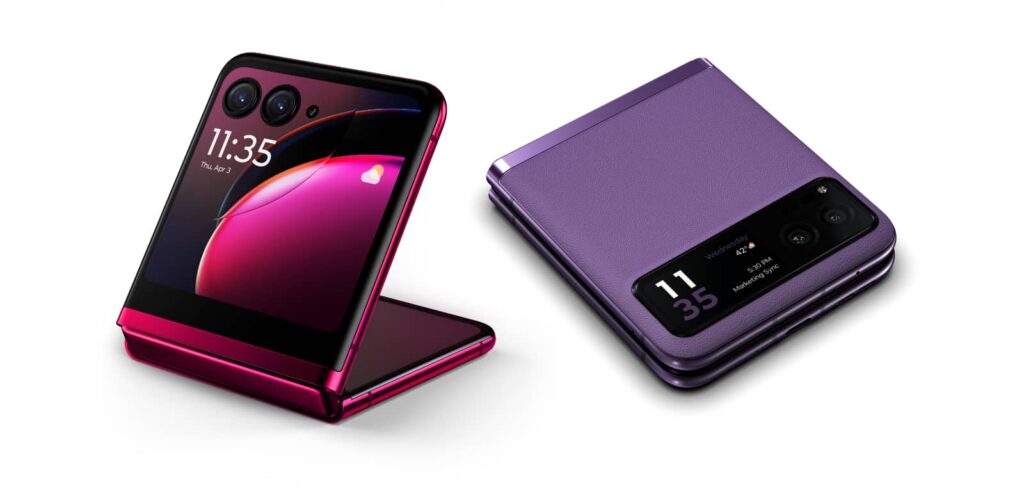Foldable flip phones are finally becoming affordable, as Moto splits its Razr line with the sub-$1K Razr 40 and the more impressive and higher priced Razr 40 Ultra.
As much as we love a good foldable, one admission (which is more like a concession) needs to be made: they’re not cheap. The foldable technology is still very new, and almost every time you pull one out in front of people, the idea will get stares and quizzical faces.
That’s easy to understand: a screen that folds is cutting edge, and almost akin to magic. It can seem crazy at first; how does that screen do that? How does a phone collapse to be smaller when the whole thing is bigger?
Foldable screens aren’t new, but their price can put them out of reach for most people, particularly because you’re paying for that foldable screen, and often all the other extra hardware, they don’t seem as well valued, at least comparatively.
But the competition is growing, as Oppo joins the foldable fight with its Find N2 Flip, and the prices are coming down, all of which is good news for customers.
There are two more options set to arrive in July, too, as Motorola shakes up its Razr line and flips the script on the foldable flip phone.
The one part of the foldable market Motorola has played in — there are foldable flip phones and foldable tablet phones — the Razr takes the big phone and folds it in half, giving your pocket a bit of a breather with a compact device that can also double up as a tripod of sorts for the camera mode.
It’s something Motorola started dabbling in with the second resurrection of the Razr in 2020, and we saw its sequel released two years later in 2022.
Now there are two new models, as Moto looks set to offer the Razr 40 and the Razr 40 Ultra in Australia, which are quaintly called the Razr and Razr+ in the US.
Moto’s $999 Razr 40
The two models are similar but different, partially because they come with different price tags and slightly different specs. It’s the same look with changes to the hardware.
In the Razr 40, you’ll find a compact foldable form not unlike what we found in the current Razr, with a small 1.5 inch external display for notifications and such, while the inside sports a 6.9 inch 144Hz foldable AMOLED screen.
Spec-wise, Motorola is opting for a Qualcomm Snapdragon 7 Gen 1 in the Razr 40, paired with 8GB RAM and 256GB storage, and offering two cameras on the outside, covering 64 megapixels wide at F1.7 and 13 megapixels at F2.2 for the ultra-wide, while a selfie-camera sits inside at 32 megapixels F2.4.
While that means the Moto 40 is exactly like other flip folds in that it only covers wide and ultra-wide, the 64 megapixel sensor is one of the highest megapixel sizes of any flip fold to date.
It all comes in a body made of a combination of aluminium and glass, with wired and wireless charging, a hint of water resistance, and a $999 price, also making it one of the most affordable foldables to date. That alone could be exciting enough.
The $999 Razr 40 won’t be Moto’s flagship foldable, though, because there’s something else to look forward to.
Moto’s $1499 Razr 40 Ultra
Similar but different again, the Razr 40 Ultra will feature much the same design, offer a similar 6.9 inch foldable AMOLED screen on the inside, but up the refresh rate to 165Hz, and even make the outside screen bigger and more useful.
Forget a small 1.5 inch screen, because here on the Moto Razr 40 Ultra, there’s a huge 3.6 inch external AMOLED display that takes up most of what you can see of that folded down phone. It’s so large, we’re actively expecting to be able to do things with the screen, and may make it the most compact Android experience we’ve seen to date.
The specs are also different for the more expensive model, with only a 12 megapixel F1.5 wide and 13 megapixel F2.2 ultra-wide, though the sensor sizes on each of those are bigger than what you find on the $999 Razr 40. You are getting a difference in quality, though, and that may make the 12 megapixel better in low light than the 64 on the less expensive model. Meanwhile, the selfie camera is the same 32 megapixel shared between models.
There’s also a change to the processor, as Moto opts for the Snapdragon 8+ Gen 1 n the more expensive model, with the same 8GB RAM and 256GB storage, same support for wired charging, wireless charging, and a hint of water resistance, though not while you’re charging. Don’t charge your phone when it’s near water, folks.
The age of affordable foldables is almost here
As far as released go, Moto’s play for cost-effective and affordable foldables is a very intriguing one.
To date, foldables have not been inexpensive, and almost always start at $1499, a trend we’ve seen on the Samsung Galaxy Z Flip range, including last year’s Galaxy Z Flip 4.
Setting flip folds at $999 may give Motorola a bit of a lead, though for how long remains the question.
As it is, Motorola Australia confirmed that the recent arrival from barely six months ago in the 2022 Razr we reviewed back in February is basically sticking around until it disappears, which means stores will sell it until it runs out at a runout price of $999 (or close to it). But the remainder stock of the current flagship Moto foldable isn’t all that Motorola needs to be thinking about.
With release for both Razr 40 models set for July, Motorola will have roughly one or two months before Samsung’s next Unpacked event, which has previously seen foldable models announced and released in August and September, as these occupy mid-year releases for the company.
It’s entirely possible, of course, that Samsung’s eventual 2023 announcements could see Moto lower the price point even more, and that could mean the age of the affordable foldable subsequently arrives.
A high-end mid-range Edge 40, too
But for folks who don’t care about the foldable, Motorola also has a mid-range device that looks aimed to compete with the recent Pixel 7a from Google, and Samsung’s Galaxy A-series, as well.
The Edge 40 looks to offer a taste of premium without necessarily giving you the premium pricing, delivering a 6.55 inch Full HD+ OLED screen in a curved glass design, wireless charging, plus a high level of water resistance, as Moto touches an IP68 water resistance.
Inside, you’ll find a MediaTek Dimensity 8020 chipset accompanied by 8GB RAM and 256GB storage, plus all the regular fix-ins, including the computer connection software for Windows that we saw when we reviewed the Moto/Lenovo ThinkPhone.
There’s also a pretty interesting camera in this phone, sporting a 50 megapixel F1.4 main wide camera alongside a 13 megapixel F2.2 ultra-wide, plus an ambient light sensor, and that’s worth noting. Photographers know F1.4 as the aperture that typically gives you a lovely background defocus, though it can go lower with F0.95 and F1.2 lenses — the lower the aperture number, the more softer focus you’re likely to find.
We can’t recall the last time or even the first time an F1.4 camera popped up on a phone below the $1K mark, so this could be an interesting spec poised to take on the current mid-range benchmark from Google, the recently released Pixel 7a.
“Our products aren’t just a me too,” said Kurt Bonnici, Head of Motorola for Greater Asia Pacific. “They’re actually more advanced than what we’re seeing form the competition.”
The question of OS updates
One of the question marks might be around Moto’s typical update cycle, which unlike that of Apple and Google stretching into the several phone release cycle, tends to be much, much shorter.
Simply put, both the Razr 40 and Razr 40 Ultra will offer three years of operating system updates for Android, while the less expensive Edge 40 will only offer two.
While that might seem totally fine, it’s worth noting that somewhere between September and October, a new version of Android is expected in Android 14, putting the phone in the territory of “about to be updated”. And yes, Motorola has said that next version will automatically count for those guaranteed operating system updates, meaning after Android 14, the Edge 40 will see a max of Android 15 presumably in 2024, while the Moto Razr 40 and Razr 40 Ultra will be updated to Android 16 presumably in 2025.
That’s not exactly a long term plan, especially as phones start to be held on longer.
Bonnici told Pickr that effectively, the lower the price tag of the phone, the fewer the updates, and outside of Google and Apple, that does largely echo the industry. Operating system updates tend to be few and far between for quite a few manufacturers, and Motorola is no exception to that.
However Motorola was quick to point out that the lifecycle of a phone is often very quick these days, and something the company is looking to improve upon.
“Lifecycle of product has been about six months [and] we’re looking to see how we can extend that,” Bonnici told Pickr, citing improvements to form and usability as how the company can push its phones for longer.
Pricing and availability
Of course, a phone can keep on keepin’ on without necessarily getting an operating system update, even if it doesn’t get the latest look or features.
For many of us, our mobile may still be ticking along without the latest update just fine, and that could mean any of these models, foldable or flat, will be just fine in the years to come.
Frankly, we’re excited about the prospect of all three, because there’s something to look forward to in each, with a bit of a first in all three.
In the Razr 40, Motorola is the first company to hit sub-$1K for a new model of foldable phone in Australia, while the Razr 40 Ultra is the first flip fold in Australia to offer a big screen that covers almost the entire front, and can be used as an actual display. You could conceivably use the Razr 40 Ultra’s 3.6 inch screen as the phone, reviving the idea of the compact phone once more. And the Edge 40 finds a way to get premium down with a seriously low-light lens and plenty of water resistance.
There are clear points of interest on all three, though they’re nothing without pricing and availability, which in Australia is fairly soon.
Locally, the Razr 40 will be available for $999 from July 21, while the Razr 40 Ultra will see release two weeks earlier from July 10, priced at $1499. Meanwhile, the Motorola Edge 40 arrives on shelves online and offline for $699 July 10, as well.













